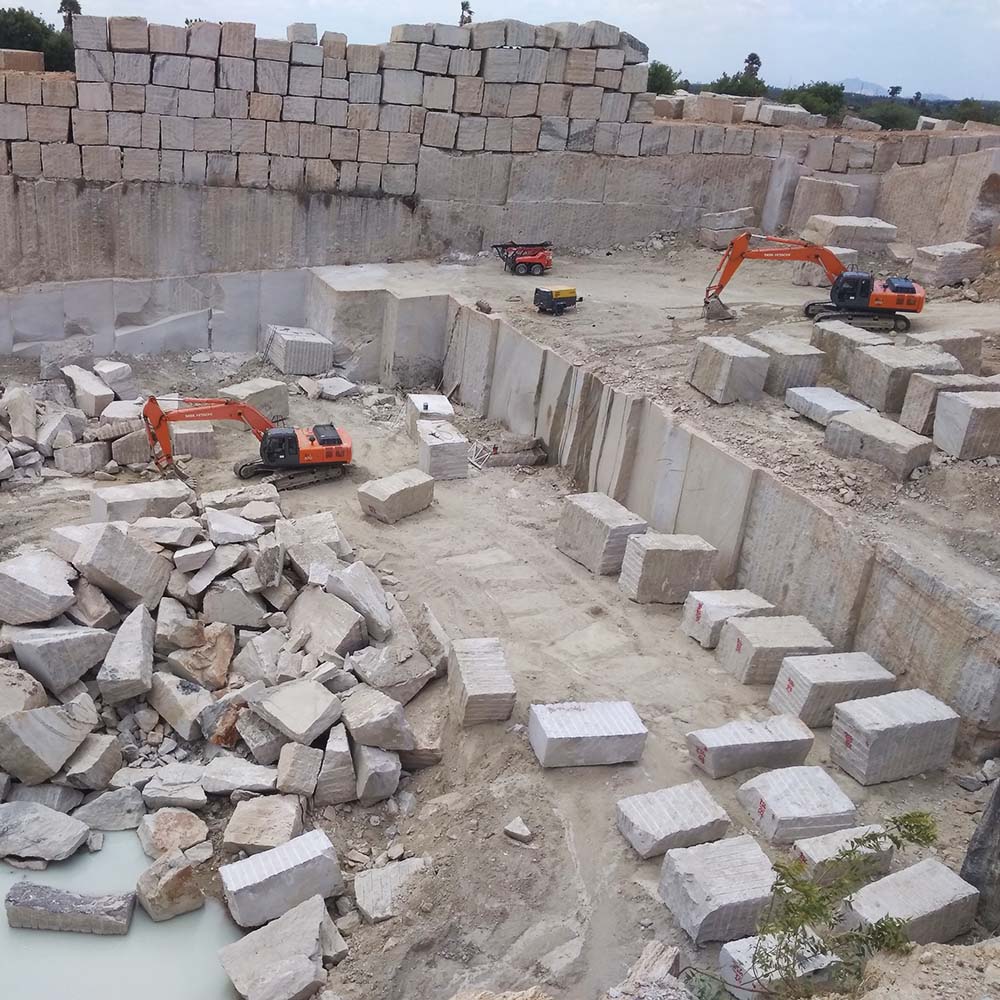The Hidden Gems: Discovering Granite Quarries in South Africa
The Hidden Gems: Discovering Granite Quarries in South Africa
Blog Article
Introducing the Mysteries of Granite Quarrying: Where Strength and Beauty Meet
The world of granite quarrying is a realm where the raw toughness of nature converges with human creativity to produce structures that stand the examination of time with an air of style. From the midsts of quarries to the meticulous polishing in workshops, the process of transforming granite into architectural marvels is a complex dance of tradition and development. As we peer into the depths of this ancient craft, we begin to uncover the hidden complexities that shape the very significance of our constructed setting.
The Beginnings of Granite Quarrying
In the annals of architectural background, the beginnings of granite quarrying are shrouded in a tapestry of ancient craftsmanship and geological marvels. Going back to old Egypt and Mesopotamia, the removal of granite from quarries marked the start of a trip that would at some point bring about the development of a few of the world's most iconic frameworks.
Granite quarrying's origins can be mapped to the skilled artisans that recognized the stone's resilience and visual appeal. With a combination of primitive devices and large decision, these very early quarry employees discovered granite blocks that would certainly end up being the foundation of worlds.
As people progressed, so did the strategies of quarrying granite. The Romans, renowned for their engineering prowess, created sophisticated techniques for extracting granite to build monoliths, temples, and roads that stood the examination of time.
The tradition of these old quarrying practices proceeds to form contemporary style, with granite remaining a symbol of stamina and style in building jobs around the world. (granite quarries in south africa)
Devices of the Quarrying Profession
The evolution of granite quarrying techniques from ancient people to modern-day times highlights the crucial function played by the tools of the quarrying sell forming the industry's practices. In ancient times, quarrying tools were simple, usually containing chisels, hammers, and wedges made from materials like bronze or iron. These tools called for substantial manpower and time to remove granite obstructs from quarries.

Additionally, the intro of pneumatic tools and high-powered machinery has substantially reduced the physical labor needed in quarrying procedures, enhancing worker safety and performance. As the quarrying industry remains to introduce, the devices of the profession remain at the forefront of driving progress and shaping the future of granite extraction.
Extracting Blocks of Granite
Using accuracy machinery and progressed methods, the removal of granite blocks from quarries has ended up being a sophisticated procedure in the contemporary quarrying sector. The initial step entails identifying the place and size of the granite deposit to identify the most efficient extraction technique. Once a suitable site is picked, the removal process starts with the boring of openings for the placement of explosives. Controlled blowing up methods are then used to disintegrate the granite into convenient areas.

Sprucing Up and Ending Up Techniques
To achieve a perfect i loved this surface area on granite blocks, skilled artisans employ a series of careful sprucing up and completing strategies. After the first removal and forming procedures, the granite obstructs undertake a thorough polishing phase to boost their all-natural elegance and resilience. One common method used in brightening granite is ruby abrasion, where commercial rubies are utilized to grind and polish the rock to a smooth coating. This procedure not only develops a glossy surface but additionally makes sure uniformity in color and appearance throughout the granite block.
In addition to sprucing up, finishing methods are related to additional improve the granite's appearance. These strategies may consist of flaming, honing, or brushing, each offering one-of-a-kind textures and surfaces to match different aesthetic choices. Flaming, for example, entails exposing the granite surface to heats to develop a rough, textured coating, ideal for outdoor applications where slip-resistance is necessary. Honing, on the other hand, supplies a matte coating that is smooth to the touch, perfect for interior kitchen counters and floor covering. By thoroughly picking and using these brightening and ending up techniques, craftsmens can change raw granite obstructs right into elegant items that showcase both strength and sophistication.

Ecological Impact and Sustainability
With the expanding focus on environmental consciousness in the industry, granite quarrying methods are increasingly inspected for their influence on all-natural resources and long-lasting sustainability. Quarrying for granite can have substantial environmental ramifications. The removal procedure often includes making use of hefty equipment, nitroglycerins, and huge quantities of water, causing environment devastation, dirt disintegration, and water air pollution. In addition, the transport of granite from quarries to refining centers creates carbon exhausts, additionally contributing to environmental deterioration. granite quarries in south africa.
To alleviate these effects and guarantee sustainability in granite quarrying, sector stakeholders are embracing various actions. Executing advanced modern technologies to reduce energy intake and water usage, redeeming quarried land for environmental restoration, and advertising responsible sourcing techniques are some approaches being utilized. Qualifications such as the Click This Link Forest Stewardship Council (FSC) and the Leadership in Power and Environmental Layout (LEED) help consumers recognize environmentally friendly granite items.
Conclusion
To conclude, granite quarrying is a process that requires specialized devices and strategies to click to find out more remove blocks of granite and brighten them to a high level of finish. While the ecological influence of quarrying can be substantial, efforts are being made to boost sustainability methods in the market. In general, granite quarrying is a delicate equilibrium between utilizing the strength and style of this all-natural stone while decreasing its influence on the atmosphere.
Report this page